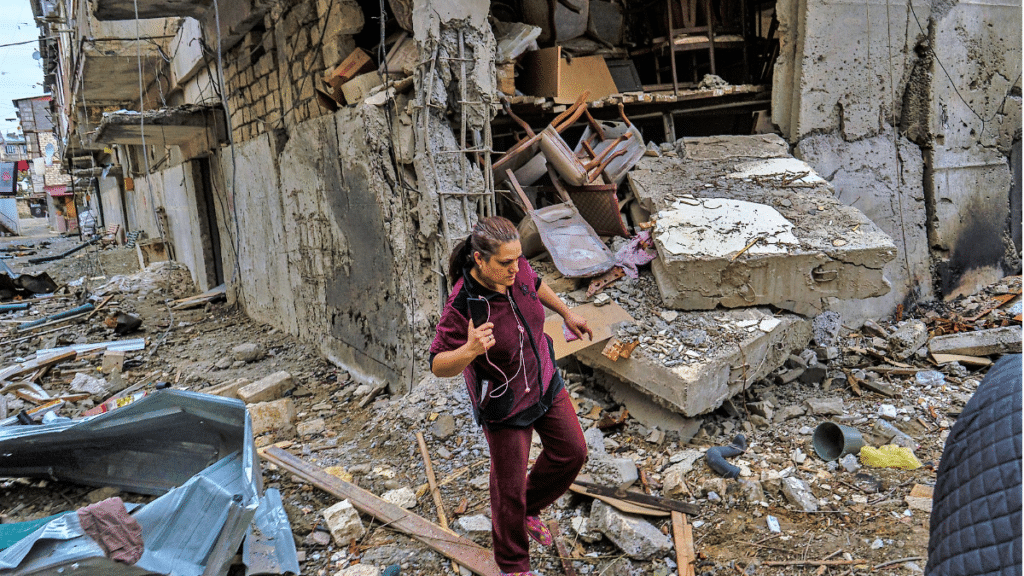Meta’s Oversight Board Recommends Major Advance in International Accountability
Alexa Koenig / Jun 22, 2023Alexa Koenig, PhD, JD, is the Executive Director of the Human Rights Center, director of the center’s Technology and Human Rights program, and a lecturer at UC Berkeley School of Law.

This article is cross-posted at Just Security.
On June 13, Meta’s Oversight Board–an organization that issues binding decisions related to the company’s content moderation challenges–released a ruling and series of recommendations that may have far-reaching ripples for the human rights and international criminal legal communities.
Recommending a Protocol for Conflict-Related Content
Known as the “Armenian prisoners of war video case,” the central issue the case raised before the Board was whether a Facebook post of prisoners of war (POWs) should have been taken down to protect the prisoners’ dignity and security, as provided for in Geneva Convention Article 13 on the humane treatment of prisoners, or left up because it was newsworthy. The Oversight Board ultimately agreed with Meta’s decision to leave the graphic video up but with an age restriction and a warning to protect potential viewers, including the POWs’ family members.
As important as this decision is, it is the accompanying recommendations that are exceptionally important. While the Board could have limited its commentary to the specific case, it leveraged the opportunity to issue a series of suggestions related to conflict-related posts generally. First, it recommended that Meta create greater clarity and transparency around when conflict-connected content will be left up or taken down, especially with regards to posts that depict prisoners of war. Such clarity would be incredibly helpful for people around the world who are trying to share what’s happening in war-affected regions but are confused about whether their posts will be deleted.
The Board also recommended that Meta “commit to preserving, and where appropriate, sharing with competent authorities evidence of atrocity crimes or grave human rights violations, such as those specified in the Rome Statute of the International Criminal Court.” To do this responsibly, they determined, Meta would need a protocol specific to “conflict situations.”
Non-governmental organizations around the world–including the Human Rights Center at UC Berkeley, Human Rights Watch, WITNESS, Mnemonic and others–have long called for social media companies to preserve conflict-related posts–especially posts that could be valuable evidence of international crimes but are at risk of removal for violating companies’ graphic content policies. Doing so would ensure companies better comply with the U.N. Guiding Principles on Business and Human Rights.
The potential human rights uses of such content are multiple: preserving a historical record of war; featuring the experiences of sometimes hard-to-reach communities, so that journalists and human rights researchers can effectively report on what is happening; and ensuring that investigators and researchers know what is happening in the world and can capture critical evidence before its removal.
An example from the International Criminal Court (ICC) is telling. In 2017 and 2018, the ICC issued warrants of arrest for Libyan warlord Al-Werfalli when a series of videos posted to social media showcased his possible involvement in the extrajudicial killings of 33 people. Those videos became critical evidence of his alleged crimes. While the Office of the Prosecutor of the ICC also relied on other information, without those posts, there would have been no case.
More recently, the ICC tried a case focused on war crimes allegedly perpetrated in Timbuktu, Mali. Closing arguments were heard at the end of May. The trial featured a groundbreaking 3D reconstruction of 27 sites of atrocity in Timbuktu created by SITU Research that drew from visual imagery pulled from online and offline digital sources.
While these examples illustrate the increasingly important role of digital content in international cases, companies also have good reasons to remove such content. As detailed in the forthcoming book Graphic, which I co-authored with Andrea Lampros, those reasons can range from sparing social media users the risk of secondary trauma, to protecting the dignity and security of those depicted, to complying with legal requirements and norms (for example, as in the Geneva Conventions, which establishes the importance of protecting prisoners of war from “public curiosity”).
Of course, there are also alternatives to the simplistic binary of “keep up/take down.” Options include but are not limited to deprioritizing content so that social media users won’t see the content unless they have the specific URL, giving the poster and/or viewer greater control over who can access and/or see the content, and auto blurring graphic imagery–a feature that can be turned off by those who need greater detail.
Next Steps for a New Era of International Evidence Collection and Sharing
The Oversight Board’s recommendation that Meta create a protocol to preserve and share graphic conflict-related content signals that we may be teetering on the edge of a powerful new era of international evidence collection and sharing.
Of course, next steps will need to be incredibly careful. Not everything can–or should–be preserved. The Board rightly underscored the necessity that any protocol must balance multiple and sometimes competing human rights interests, including protecting users’ rights to due process and privacy. It also recommended that Meta include “civil society, academia and other experts” in the protocol drafting process in order to help navigate this difficult terrain. As the Board explained, Meta will need to grapple with policies for “initiating and terminating preservation, data retention periods, as well as the process and safeguards for accepting requests for preservation and for sharing data with competent authorities, including international accountability mechanisms and courts”–none of which are easy tasks. But such an achievement will be worth the investment: a protocol would go a long way toward acknowledging the value of content not just for its “newsworthiness” but for holding those who perpetrate the world’s most grave crimes to account.
Once the protocol is created, an important next step will be to determine how such a process might interact (if at all) with another human rights objective: creating a well-resourced international evidence locker to collect and hold digital (especially visual) data related to international crimes. Given that war-related cases may take years or even decades to build, there’s a serious time-interval challenge that may conflict with companies’ traditional 90 day preservation holds. Such a limited timelinesuggests some kind of repository may be needed to safeguard content outside of existing corporate and government-focused frameworks.
As indicated by a forthcoming report from the International Bar Association, the Human Rights Center at UC Berkeley School of Law, and the Institute for Ethics, Law and Armed Conflict at the University of Oxford, the difficulty of answering critical questions around security, governance, structure, access, and other considerations means that any such mechanism is likely still years off. In the meantime, having companies preserve and share such content directly with what the Oversight Board calls “competent authorities” is an important step.
Of course, Meta will face challenges around defining the geographic and temporal scope of what is preserved, as well as what constitutes a “conflict” and other preservation challenges. But if they can meet those challenges with civil society’s support, Meta will become a critical first mover in the technology and human rights field, potentially providing a blueprint for social media companies around the world and strengthening the future of international justice.
Authors
